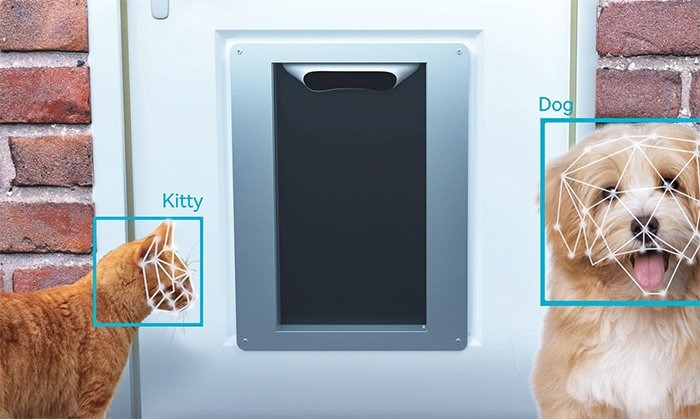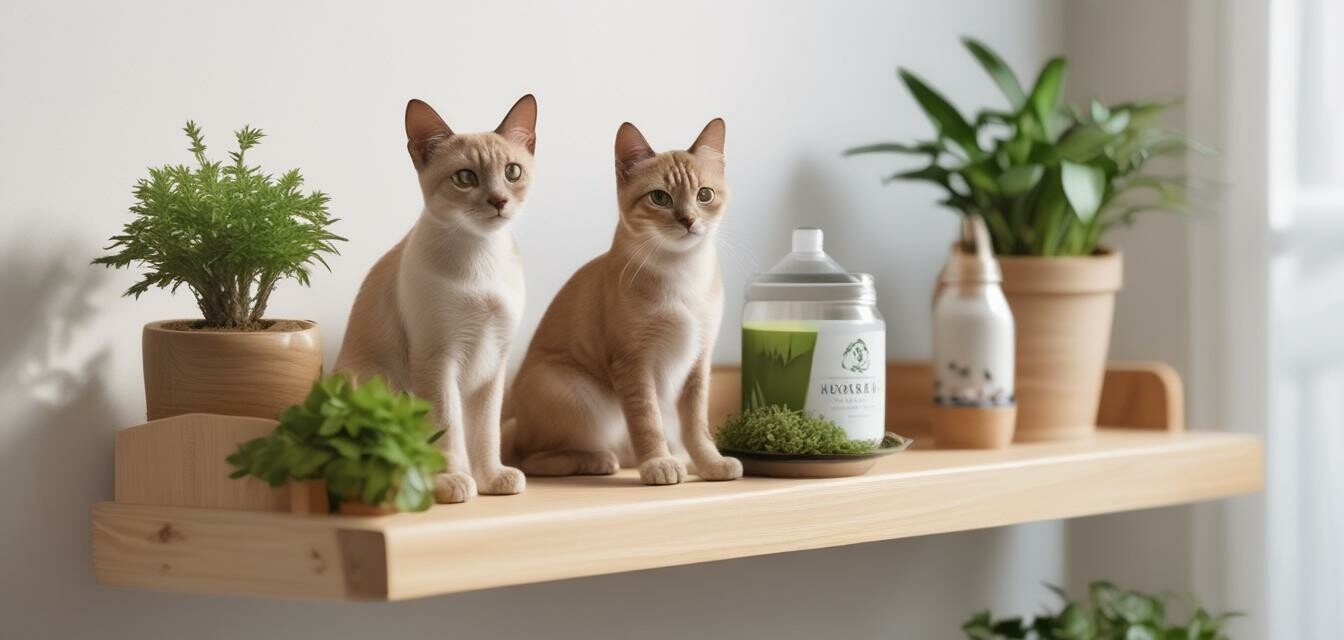
How to Make Your Home Husky-Friendly in India: Space, Flooring, and Furniture Tips
Making your home husky-friendly in India involves planning for space, cool flooring, and durable furniture. Huskies need open areas to play, surfaces that keep them cool, and safe, pet-appropriate zones for rest and activity. Given India’s hot climate, ventilation and hydration are crucial. With proper furniture, restricted access zones, and mental stimulation, you can ensure your husky thrives happily and healthily indoors—even in Indian conditions.
🐶 Pet Star
43 min read · 15, Jun 2025

Introduction
Huskies are stunning, energetic, and intelligent dogs originally bred for cold climates and long-distance sled pulling. But despite their Siberian origin, many pet lovers in India are now welcoming huskies into their homes. However, adapting your Indian household to suit a husky's needs is crucial for their comfort and well-being.
Unlike smaller breeds, huskies have specific environmental, spatial, and physical needs that go beyond food and play. From dealing with India’s heat to ensuring safe flooring and pet-proof furniture, creating a husky-friendly home involves careful planning.
In this article, we’ll guide you through the essential tips on space planning, flooring, and furniture to help your husky live comfortably and happily in your Indian home. Designing a Husky-friendly home in India is a highly specific and crucial undertaking, requiring a deep understanding of the breed's intrinsic needs – their double coat built for Arctic climates, their high energy levels, their strong prey drive, their social nature, and their intelligence – and meticulously adapting a living space that is often characterized by warmth, humidity, and smaller footprints than Western homes. Unlike many other breeds, a Husky's comfort and well-being are intrinsically tied to specific environmental conditions, particularly temperature regulation and sufficient space for their unique exercise requirements. Therefore, creating an ideal home for a Husky in India is not merely about aesthetic choices but a strategic modification of space, careful consideration of flooring, and selection of appropriate furniture, all aimed at mitigating heat stress, providing ample room for their activity, ensuring safety, and minimizing maintenance in a challenging climate. Without these deliberate adaptations, a Husky can become uncomfortable, bored, destructive, or even suffer from heat-related illnesses, underscoring that a truly "friendly" home is one that thoughtfully anticipates and caters to their specialized needs within the Indian context.
The most critical factor in making a home Husky-friendly in India is managing the heat and providing ample cooling. Huskies are supremely adapted to cold, and the Indian climate, especially the long, hot summers, poses a significant health risk. While air conditioning is the most effective solution, it's not always feasible or sustainable for 24/7 use. Therefore, the home environment must incorporate passive and active cooling strategies. Cool flooring materials are paramount. Tiled floors (ceramic, vitrified, or porcelain) are an excellent choice as they remain relatively cool to the touch and are easy to clean, providing a comfortable spot for a Husky to lie down and dissipate heat. Marble or granite flooring, if present, is even better for its inherent coolness. Avoid extensive carpeting, especially wall-to-wall, as it traps heat, can be difficult to clean (especially with shedding and potential accidents), and can exacerbate allergies. If carpets are unavoidable in certain areas, ensure they are easily removable rugs that can be cleaned frequently. Cooling mats, filled with gel or water, can be strategically placed in resting areas, offering a personalized cool spot. For homes without central AC, consider installing ceiling fans, pedestal fans, and ensuring good cross-ventilation through open windows (secured with sturdy screens to prevent escape). Exhaust fans in rooms can help pull hot air out. During peak summer, having access to a room with an air conditioner, even if for limited periods, is vital for their well-being and to prevent heatstroke. Some owners even use ice packs wrapped in towels near their resting areas during extreme heat.
Space considerations are equally vital for this active and often large breed. Huskies thrive on activity and can become destructive if bored or confined. While a large yard is ideal, it's not always practical in urban Indian settings. The focus shifts to maximizing indoor space and optimizing any available outdoor areas. Within the home, ensure there are clear, unobstructed pathways for the Husky to move freely. Avoid clutter that can impede their movement or become chew targets. Designate a specific, ample area for their crate or bed, allowing them enough room to stretch out comfortably. If apartment living, it's crucial that the owners are committed to multiple daily walks and outdoor exercise sessions, compensating for limited home space. The size of the home itself matters less than the commitment to providing sufficient physical and mental stimulation outside. If a yard is available, it must be securely fenced with a minimum height of 6 feet, as Huskies are notorious escape artists, adept at jumping and digging. The fence should extend below ground level or have a sturdy base to prevent digging underneath. Regular checks of the fence for vulnerabilities are necessary. Provide shade and a water source in the yard.
Furniture choices and arrangement should prioritize durability, ease of cleaning, and safety, while also accommodating a Husky's specific behaviors. Given their strong chewing instincts, especially as puppies and young adults, chew-resistant furniture is highly recommended. Furniture made of solid wood, metal, or durable synthetic materials is preferable to easily destructible wicker or softwoods. Providing an abundance of appropriate chew toys is the best defense against furniture destruction. Invest in durable, washable pet beds rather than allowing them to claim valuable human furniture, although many Huskies will eventually seek out cool spots on the floor anyway. If you wish to allow them on furniture, consider investing in furniture covers that are easily removable and washable to protect upholstery from shedding, dirt, and occasional accidents. Fabric choices for furniture should lean towards sturdy, tightly woven materials that resist snags and are easy to clean, such as microfibers or performance fabrics, over delicate silks or velvets. Avoid furniture with small, easily detachable parts that could be chewed and swallowed. Arrange furniture to create clear pathways, minimizing tight corners where a Husky might feel trapped or stressed. Consider placing their water bowls and feeding stations on easily cleanable surfaces, possibly with a mat underneath, to manage spills.
Beyond space, flooring, and furniture, several other factors contribute to a Husky-friendly home in India. Grooming tools are essential. Due to their heavy shedding, especially during seasonal blows, a powerful vacuum cleaner designed for pet hair is invaluable. Regular brushing (daily or every other day) is necessary to manage shedding and prevent mats, which can trap heat. Investing in a good de-shedding tool is wise. Mental stimulation and enrichment are critical to prevent boredom-induced destructive behaviors. Huskies are intelligent and require more than just physical exercise; puzzle toys, interactive feeders, and consistent training sessions help tire their minds. Secure storage for all potentially harmful items is non-negotiable. This includes cleaning supplies, medications, toxic human foods, and small objects that could be ingested. Huskies are curious and resourceful. Finally, consistent training and socialization are paramount, regardless of climate. A well-trained Husky is less likely to engage in destructive behaviors and more likely to adapt to their living environment. This means regular reinforcement of commands, polite leash manners, and appropriate social interactions with other dogs and people, ensuring they are well-adjusted and comfortable within their home and community.
In conclusion, transforming a home into a Husky-friendly haven in India is a multifaceted strategic endeavor that prioritizes their unique physiological and behavioral needs. It begins with creating a cool, climate-managed interior through appropriate flooring (tiles, marble), ample ventilation, and strategic use of air conditioning, minimizing heat stress. Maximizing space, whether through open floor plans indoors or securely fenced outdoor areas, addresses their high energy and need for movement. Furniture choices must prioritize durability, chew-resistance, and ease of cleaning, mitigating the impact of their powerful jaws and heavy shedding. Beyond these physical modifications, the ideal home is also characterized by diligent grooming, continuous mental stimulation, secure storage of hazards, and consistent positive reinforcement training. By meticulously adapting the living environment to cater to their Arctic heritage within a tropical setting, owners can ensure their beloved Labradors remain comfortable, healthy, well-behaved, and truly thrive in their Indian homes, fostering a harmonious and joyful companionship.
Understanding Husky Behavior and Needs
Before modifying your home, it’s essential to understand what makes a husky unique:
- High energy: Huskies need lots of physical activity and mental stimulation.
- Shedding: They shed heavily, especially during seasonal changes.
- Cool weather lovers: Heat tolerance is low, making temperature control crucial.
- Curious and clever: They can open doors, dig, or jump fences.
- Pack mentality: Huskies thrive on companionship and dislike being alone for too long.
Keeping these traits in mind, let’s explore how your home can be adapted to fit their lifestyle in an Indian setting.
Space Planning for Huskies in Indian Homes
Huskies are not ideal for small, cramped apartments unless they get proper exercise outdoors. Whether you live in an apartment or a bungalow, creating a spacious, open environment helps prevent behavioral problems.
1. Dedicated Play Area
Huskies love to run, jump, and play.
Tips:
- Clear a portion of your living room or backyard for playtime.
- Use non-breakable decor items in these areas.
- Install a small ball pit or rope toys corner to keep them engaged.
2. Indoor-Outdoor Access
If you have a balcony or terrace, make it dog-friendly.
Tips:
- Install safety netting or railing extensions.
- Add an artificial grass patch for a natural feel.
- Keep water bowls and shaded areas available.
3. Avoid Cluttered Spaces
Less furniture and more open floor area help a husky move freely.
Tips:
- Avoid fragile vases and glass decor on the floor.
- Opt for minimalist decor styles to keep the area husky-proof.
4. Gated Rooms
Use pet gates to restrict access to off-limit rooms.
Tips:
- Install sturdy baby gates at stairs or kitchen entrances.
- Use command training along with gating for consistency.
Flooring Options Suitable for Huskies
Huskies have powerful paws and enjoy sprinting across rooms, so flooring must be both comfortable and scratch-resistant. Indian homes usually have tile, marble, or wooden flooring—but not all are husky-friendly.
1. Anti-Slip Flooring
Prevent joint injuries and slipping.
Best options:
- Vinyl flooring – Scratch-resistant, durable, and easy to clean.
- Textured tiles – Matte finish tiles provide grip.
- Carpet runners – Ideal on stairs or hallways.
2. Cool Flooring for Indian Summers
Huskies tend to overheat quickly. Choose cool surfaces.
Best options:
- Marble or granite – Naturally cool and comfortable in hot climates.
- Cotton rugs – Light and breathable rugs help in lounging.
3. Easy to Clean Flooring
Shedding and mud can be messy.
Look for:
- Water-resistant flooring
- Stain-proof surfaces
- Avoid high-pile carpets
4. Avoid Hardwood or Laminate (Unless Sealed)
These can get scratched and may cause slipping.
Tip: Use area rugs or paw wax to avoid skidding.
Furniture Tips for a Husky-Friendly Home
Huskies can be chewers, jumpers, and shedders. So, your furniture should be pet-proof, easy to clean, and durable.
1. Choose Pet-Friendly Fabrics
Avoid delicate or clingy fabrics.
Best options:
- Microfiber – Durable, easy to clean, and resists fur.
- Leather (faux or real) – Easy to wipe, though claws may scratch it.
- Canvas slipcovers – Removable and washable.
2. Low Furniture or Dog-Friendly Seating
Huskies love to jump onto couches and beds.
Tips:
- Choose lower-height beds or add pet stairs.
- Create a cozy floor-level bed with orthopedic foam.
3. Create a Designated Husky Resting Spot
Give them their own ‘zone’.
Ideas:
- Use a corner with a cooling mat or pet mattress.
- Add a fan or small cooler nearby during summers.
4. Scratch-Proof Surfaces
Prevent damage to furniture legs and doors.
Tips:
- Apply anti-scratch tape or plastic protectors.
- Train your husky to use chew toys instead of furniture legs.
5. Avoid Glass Tables and Delicate Decor
Large, active huskies may accidentally bump into items.
Tip: Stick to sturdy wood or metal furniture with rounded corners.
Temperature Management in Indian Homes for Huskies
One of the most crucial aspects of husky care in India is protecting them from the harsh heat.
1. Keep Rooms Well Ventilated
Ensure constant airflow to prevent heat buildup.
Tips:
- Use ceiling fans or standing fans in husky areas.
- Open windows with mesh to allow breeze but prevent escape.
2. Use Cooling Mats and AC Timing
Help them cool down without high electricity bills.
Tips:
- Invest in gel-based cooling mats for resting areas.
- Run the air conditioner during peak afternoon heat (12 PM – 4 PM).
3. Avoid Direct Sunlight Areas
Move husky beds away from windows.
Tip: Install blackout curtains or blinds during summers.
4. Hydration is Key
Keep multiple bowls of cool water in different rooms.
Essential Husky-Proofing Items for Indian Homes
Here's a checklist of must-haves to make your home husky-ready:
✅ Scratch-resistant flooring
✅ Durable sofa covers
✅ Dog cooling mat
✅ High-powered fan or cooler
✅ Pet gates for restricted areas
✅ No-slip rugs or mats
✅ Pet-safe cleaning products
✅ Paw-washing station (especially during monsoon)
✅ Toys for chewing, tugging, and mental stimulation
✅ Secure fencing if you have a backyard or terrace
Do’s and Don’ts for Husky Homes in India
✅ Do’s
- Do groom your husky regularly to reduce fur on furniture.
- Do let them roam freely in safe, husky-proofed areas.
- Do engage in twice-daily walks or play sessions.
- Do offer cool shaded spots for rest.
- Do reward good behavior and consistency in training.
❌ Don’ts
- Don’t leave them alone for long hours.
- Don’t use tile flooring without mats—it gets slippery.
- Don’t ignore scratching or chewing—redirect with toys.
- Don’t keep heavy drapes or fragile items in reach.
- Don’t rely on ceiling fans alone during peak summer.
Conclusion
Owning a husky in India comes with its challenges, but with the right space planning, flooring choices, and furniture upgrades, you can create a home that supports both your lifestyle and your husky’s happiness.
From creating cooling corners to using washable furniture covers, small changes make a big difference. A husky-friendly home isn’t about spending lakhs—it's about understanding your dog’s natural instincts and comfort needs, then adapting your Indian home accordingly.
A happy husky equals a peaceful home filled with love, laughter, and wagging tails.
Q&A Section
Q1: Why is it important to make your home husky-friendly in India?
Ans: Huskies are an energetic and thick-coated breed that require special care in hot climates like India. A husky-friendly home ensures comfort, health, and mental well-being for your pet.
Q2: How much space does a husky need in an Indian household?
Ans: Huskies need ample open space for movement and play. A large room, open balcony, or garden area is ideal to match their high activity levels.
Q3: What kind of flooring is best suited for huskies in India?
Ans: Cool flooring like tiles or marble is best, as it helps huskies stay cool in India’s warm climate. Avoid wooden or carpeted floors that trap heat.
Q4: How can I keep my husky cool indoors during Indian summers?
Ans: Use ceiling fans, keep curtains drawn during peak heat, and allow access to air-conditioned or well-ventilated rooms. Cooling mats and regular hydration also help.
Q5: What type of furniture should I choose to suit a husky’s needs?
Ans: Use durable, chew-resistant furniture. Pet-friendly sofas with washable covers, low-height beds, and a cozy dog bed in a quiet corner are ideal.
Q6: Should I allow my husky on the furniture or restrict them?
Ans: It depends on your training choice, but consistency is key. Provide alternatives like a designated pet bed or dog couch if you don’t want them on your furniture.
Q7: How can I make a dedicated area for my husky in my house?
Ans: Choose a cool, calm corner with a soft bed, toys, water bowl, and enough space to stretch. This gives them a sense of security and routine.
Q8: What safety tips should I follow for my husky indoors?
Ans: Keep electrical cords, toxic plants, and sharp objects out of reach. Use gates to restrict access to kitchens or balconies when unattended.
Q9: Are there specific materials to avoid in home décor with huskies?
Ans: Avoid light-colored fabrics, carpets, and delicate materials, as huskies shed heavily. Opt for darker, stain-resistant, and easy-to-clean materials.
Q10: How can I enrich my husky’s indoor environment in Indian homes?
Ans: Provide interactive toys, treat-dispensing puzzles, training sessions, and short indoor games. Mental stimulation is essential, especially when outdoor walks are limited due to heat.
Similar Articles
Find more relatable content in similar Articles

How Climate Change Affects Wild and Domestic Animals...
Climate change is dramatically.. Read More

Smart Homes for Pets: Automated Feeders, Doors, and Mo..
As smart home technology advan.. Read More

How Pets Strengthen Family Bonds...
Pets are more than just compan.. Read More

Sustainable Pet Products: What to Look for in 2025...
As sustainability becomes a ce.. Read More
Explore Other Categories
© 2024 Copyrights by rPets. All Rights Reserved.